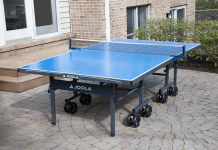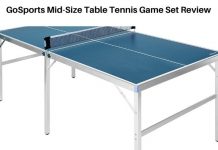I don’t know about the rest of you– but I’m super competitive. Like, nitpick interpretation of the rules competitive. I promise I’m not a spoiled sport but whenever it’s time to share the limelight with others– it can be challenging.
Enter Pandemic. A collaborative strategy board game centered on the worldwide possibility of multiple pandemics. The concept alone is very intriguing. What would the world do if we had so many pandemic level diseases to contend with at once? In a way, it’s kind of like being in the movie I am Legend with Will Smith.
Only this time you and your team get to race for the cure. And if you can’t learn how to share the spotlight, your moves could spell doom for the whole world.
(Also there are no zombies. Missed opportunity there!)
Table of Contents
Role Strategies
In Pandemic there are five unique roles that players can be. Each role has unique abilities. Focus on utilizing those to the fullest by making a plan of attack.
For example, since the Researcher can pass cards to any player, regardless of their location, I often send the Researcher’s cards to a player who had at least two or three more of the same color card. I also pick players that are near a research center or can get there within an action or two. Then in their turn, they can cure the disease.
Medic
With the Medic, send them to cities that have three or more cubes of an infection. Since the Medic removes all of one color from a city in one action they make the most sense to keep outbreaks under control.
Since the other players using the treat disease action only remove one cube, I would only use them if you are worried about an outbreak in that city.
Use the other players to support the Medic through travel and cures and you should have no trouble beating the game.
Dispatcher
This is where the Dispatcher comes in handy. Collaborate with the Medic and move them across the board to hotspot areas that are heavily loaded down with infection cubes.
Another way to utilize the Dispatcher is to move players that have enough cards to cure a disease to the city that the Scientist is in. That person may hand over the cards to the Scientist. Since each card counts as one action you could hand over up to three cards to another player.
Related Article: Ticket to Ride Strategy
In this scenario, say the Scientist only needs one more card to discover the cure, handing over your cards then becomes a no-brainer.
Using the Dispatcher in this way also saves everyone time and effort. When playing this game, every second counts so take full advantage of this ability.
Researcher
I have found the best way to utilize the Researcher’s ability is to look for the player who has the most of one color card. Collaborate with them about getting to a Research Center and then hand over your cards for your turn. Then that player has the cards they need to cure the disease on their turn.
It is easy to collaborate with the other players this way and get them the cards they need. Often, the other players end up having a decent amount of a certain color card. One player has a lot of blue, one has black, and so on. With this knowledge in place, it is easy to hand over the cards they need while the players in question use their other color cards to move around the board.
Once other players are in place they are able to Cure diseases and made for a quick and easy game. Don’t underestimate the sharing of knowledge in this game.
Operations Expert
Being able to build a Research Center in whatever city you’re in helps cut down on the stress of finding the right card. Consider using your Dispatcher to move the Operations Expert to cities that are in critical need. Being able to use these two roles together will also help you plan where it makes the most sense to have Research Centers.
You’re limited to creating six Research Centers, so be careful in your placement. Consider spreading them out throughout the board so that all the other players can reach a hot spot at a moment’s notice. The first time I played Pandemic, I built a couple of Centers where the infection started to crop up.
Related Article: Yahtzee Strategies to Maximize Your Total
There was a high infection rate in the South American areas of Santiago and Lima. So I built a Research center down in Bogota so that it was easier for me to travel down to those cities. I could treat them whenever the infection rate got too high.
I also built another research center in Lagos which was another hot spot for a yellow infection outbreak.
Building these Research Centers in these key locations made it possible for me to bounce back and forth between these cities and keep the infection rate down until I could find the cure.
A little while later, red showed up in Tokyo, Japan. Since I knew that would be the next disease I would have to counter, I built a Research Center in the town that was closest to them: Kolkata as a means to get to Tokyo.
Scientist
The Scientist only needs four cards to discover a Cure. Oftentimes I combine the efforts of a Researcher and a Scientist. Use the Researcher to share knowledge with the Scientist. Then they will be able to find the cure much faster.
Having one player or all the players trying to hold on to enough cards to cure any of the diseases will stall your progress. Whenever possible, other player roles should hand their cards to the Scientist or Researcher.
Finding Cures is not only the fastest way to win but is also crucial to preventing Outbreaks. Like the other player roles, use the Dispatcher to move the Scientist where you need them and make sure they still have plenty of action turns to do what they need to do.
Curing Diseases
The most important key to preventing further outbreaks is to cure diseases whenever you have the chance. The main benefit to this is that any new cards that are drawn in the color of a cured disease will have no effect.
In the early game, you’ll have a lot of cards that lend to many different cities. It might be tempting to fly all over the map, but consider holding onto those cards for a turn or two.
Related Article: Basic Checkers Strategies
Also, utilize the Researcher’s ability to share information to stockpile cards with the Scientist for the best possible outcome. If these two roles aren’t available, collaborate however you can so that the player that makes the most sense has the most cards of the disease you’re trying to cure.
Preventing Outbreaks
Not only do you need to balance finding Cures for the diseases, but you also need to keep the current diseases under control. Prioritize going to cities that have three cubes of the same color, and eliminate at least one of those cubes so that way you don’t have an outbreak. Or even worse, a chain outbreak.
Try to keep all cities under two blocks or less. If you have two nearby cities that have three blocks, consider removing a block from each city instead of reducing all of it in one city. Doing this often will prevent the formation of what players call “Triangle cities”.
Preventing Triangle Cities
Triangle cities are when three nearby points link together and all three cities have three cubes of the same color. If one of those cities outbreak, it causes a chain between the other two. Due to their location and connections, it causes an even wider spread of infection than would be normally. It also causes the outbreak meter to rise.
You must prevent these formations at all costs or you’ll lose very quickly. This unfortunate event has led to a quick defeat on many occasions. Sometimes losing just one cure away from winning.
Outbreak Meter
If the Outbreak meter rises to eight, you’re dead. Seven chances seem like a large buffer, but when you have chain outbreaks, it racks up fast. When you’re fighting multiple different color diseases on the board, you’ll have to spend time sending people back and forth to keep both of those areas under control.
Oftentimes before you can really get a hold on disease, you’ll pull an Epidemic card which causes you to infect a new area and then have to reshuffle the areas that were already infected before.
This can become very dangerous as perhaps you have not had the time or the resources to cure some of those three cubed areas and now you’ve had to shuffle the discard pile back into the draw pile. Not only does this cause more chained outbreaks, but it also can make you lose really fast.
What’s the Best Way to Prevent an Outbreak?
The best way to counter this is to have a mindset that surviving is more important than curing every block in every city. Making it through another turn and preventing further outbreaks is always a top priority. Secondly, focus on getting enough cards to Cure the diseases versus trying to eliminate all of the cubes off the board.
Related Article: Splendor Strategies for Quicker Victory
If your infection discard pile has been shuffled, try to go back to the cities you can remember. Take off at least one cube. There have been several times that neglecting to do this has caused my team multiple chain outbreaks and ultimately a loss.
Consider passing certain city cards to the players who will be able to use them the best. For example, if you have a three cubed area in New York and the Medic is in the same town as you, hand over the New York card to that player so that they can take out the disease.
Special Event Cards
Within the player draw card pile, there are five special event cards. These can be played at any time for no action cost. Consider these like an Ace in your back pocket. Nice to have, but more important to use at the right time. Every game is different and you will have to use your judgment.
So whenever the opportunity presents itself, you should consider using those cards. However, some of the cards have a stipulation such as you must ask a player for permission before moving their pieces. But since this is a collaborative game, most people will not disagree with your choices. But it’s always polite to ask.
For example, say you have a city that has a heavy outbreak. If you have the Government Grant card, use it to build a Research Center. Then when you get the cards you’re able to quickly eradicate the disease. This card can be really useful if you find yourself against the wall and you need to cure a disease fast.
If you have the Resilient Population card, dig through your infection discard pile and remove a city that has been infected a couple of times. Prioritize choosing a city that has a high risk of causing a chain reaction outbreak.
You can use the Airlift card in a similar way to the Dispatcher’s ability. This card is useful if you don’t have a Dispatcher player or if you need to high tail it to a key city. Preferably hang onto this card for the end game.
The Forecast card can be useful as it allows you to know what the next six cards to be drawn are since you are able to put them in a certain order.
For example, if you know that London is heavily infected but has been put back in the infection pile, you could put the London card towards the bottom of those six cards.
This buys you time for a player to remove some of those pieces before the next players have their infection turn.
One Quiet Night can be useful if you’re close to winning, and the board is really stacked against you. As tempting as it would be to use this at the beginning of the game, using this card towards the end of your game could make the difference between winning and losing.
What is the Best Way to Win Pandemic?
The best way to win Pandemic is to communicate with your teammates. Most of the strategy games that we cover involve beating your opponents. Pandemic is unique in the fact that you have to work together with your teammates to score a win. This game heavily favors players that can work together so if you have anyone who’s resistant to that idea– you might reconsider including them.
Or maybe you’re the kind of person who likes 2 player cooperative games like these?
The game rules state that if you’re playing Heroic mode, players are not allowed to show the contents of their hands. However, in a game where winning is based on collaboration, consider throwing that rule out.
To keep your hand limit in order, you’ll have to think about what place your piece is moving next. Think about what benefits you have to hang onto this card. Should you keep it so that you can travel there on the next turn? Or get rid of this card so that you have five cards that you need to cure a disease?
For example, keep track of the player discard pile so that you know if you can discard a certain color card. If you’ve already cured the black disease it’s better to discard a black card than a red one.
Strike a balance between curing diseases, preventing outbreaks, and saving cards. It’s better to survive another turn than risk a chain outbreak reaction. And who knows, maybe you’ll stop a real zombie apocalypse one day.

Veronica is a Green Bay-based freelance writer and editor with extensive experience with board games. When not busy scribbling her thoughts, you might find her in her garden, hiking out in the woods, or exploring new food joints.
Veronica is a die-hard board game and chess hobbyist by night. She likes to try out new games and is always on the lookout to recruit new players for her game night (so beware!). When not playing board games or throwing darts, she is usually busy painting miniatures (or doing other nerdy stuff).
She is the CEO & Content Writer of Indoor Games Zone. She shares her expertise from years of playing chess, board games, and darts.

![Stiga XTR Pro Review | 1,559+ Global Ratings (In-Depth Guide) [year] Stiga XTR Pro Review](https://indoorgameszone.com/wp-content/uploads/2021/08/Stiga-XTR-Pro-Review-218x150.jpg)






